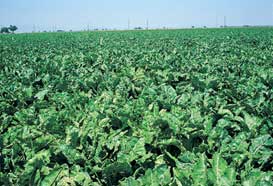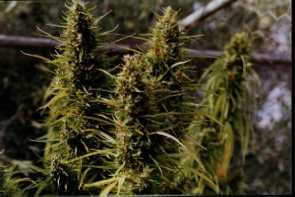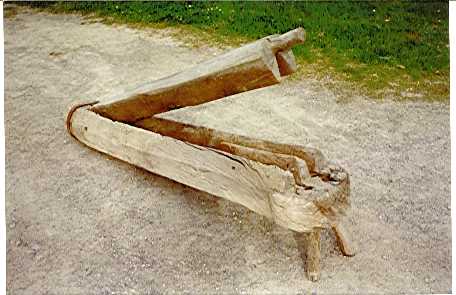|
|
 |













|
The municipal term of Tubilla of the
Lake is provided with 2330 hectares of which more than 1700 they devote
themselves to the agriculture, another 300 hectares are a mount of pines and
the rest is a not cultivable area or edificable.
At present most of the cultivated hectares is dedicated
to the cereal. A small part devotes itself to the culture of the sugar beetroot
and one is increasing year after year the surface dedicated
to the vine, due to the heyday of this product in our region, protected by the
denomination of origin Bank of the Duero.
Ademá exists other products and services that are generated in Tubilla of the Lake, apart from the purely
agricultural ones: To see the paragraph .
There is not doubt that the cereal is the product that more
extension occupies in the municipal term. The products cerealísticos
of this zone are the wheat and the barley.
|

|
Tubilla of the Lake is provided with an irregular area, high moorlands of tierrra
poor person are alternated with vallejos and generous fertile vegas. The production
in the moorlands is usually from 2500 to 3000 kg/ha. whereas in the vegas it doubles
going so far as in some cases to overcome 9000 kg/ha. Nevertheless the
average yield places concerning 3500 kg/ha. because the most fertile areas
occupy minor extension.
|
The varieties that are cultivated are very diverse, although in the last years
one tends to cultivate varieties of major yield at the cost of which moisture is not absent, since
these varieties are more sensitive to the scarcity of rains in spring.
Although the prices of cereal have fallen down of alarming form in the last
15 years, going on from 25 pts / kg in 1985 to 17 pts / kg in 2001, it keeps on cultivating
because the alternatives that could have appeared do not adapt themselves appropriately to the area
in addition to demanding a renewal in the existing machinery.
|
The product that more has emerged in the last years is undoubtedly
the vineyard. For Tubilla of the Lake is inside the wine zone
of the , it has allowed to drag by the heyday that has experienced the
wine labelled under this denomination.
|
are in the left margin of the
river Gromejón, in areas and sandy hillsides. Until 5 years ago Tubilla was provided with
old vines, in some cases of more than 80 years, hawthorns of between 200
and 500 plants each one, where the black grape was occupying 70 per cent of the product and the
rest, the white grape.
Nevertheless there has been important the investment
in the vineyard that has been carried out in Tubilla in the last 5
years. More than 50 have stood firm you have. of vine, with varieties
allowed by the denomination of origin, emphasizing over
all the variety Tempranillo. One has increased in more than one 150 per
cent the initial extension.
|

|
The sugar Beetroot has been cultivated in Tubilla for many years,
the facility of irrigation. This product needs big quantity of
water in the summer epoch, and in Tubilla there abounds the fertile area near
to the river Gromejón and to the existing channels.
|

|

|
Although it is not so abundant as the previous products, the sunflower also
is between the habitual ones, having increased the production
from the helps of the European Union.
|
The Greeks, Romans, Arabs ... they were already cultivating and knowing the
nutritive, textile and medicinal properties of the hemp.
In Tubilla of the Lake, as in almost the whole Spain,
the 60s were cultivated up to brought in well. This culture, which in the epoch of Felipe II was impelled
by
the whole Kingdom, was a victim of the propaganda come from America in his against, up
to such a point that practically has disappeared of the peninsula.
The hemp that was cultivated in Tubilla was the textile hemp. It is possible to affirm that
every family had a "tablar" (a small plot) destined for this culture.
The hemp seeds were sowed in May, the method was " to voleo " and they were
wrapping up with the trail so that a few small ruts were remaining to
facilitate the irrigation. It was suitable to put a scarecrow so that the sparrows
were not eating the seeds the days before germinating. It was said that " the one that is afraid
to the sparrows does not sow hemp seeds ". Fear, not, but a little of precaution was
necessary If the time was dry it was necessary to water so that the plant was born and growing
up to covering the ground and power, this way, to preserve the moisture of the soil. That's
why they usually sowed in fresh area.
The compilation was doing at the end of September or in October. Come this moment,
it was taking a shower a little so that it was possible to start easily. There were doing a few sheaves,
calls " dexterity ", on which they were putting themselves of foot in the shape of an Indian hut so
that they were drying off, I process that it was ending in the age, where the hemp
seeds of the branches were separating rubbing them or giving them small blows. The hemp seeds were winnowed
and
were taking to the attic. The branches were throwing them in soaking in clean waters of creeks
or of the river placing a few stones on them. This process lasted 9 ó 10 days.
Later they were drying off to the sun during 4 ó 5 days, remaining this way ready for the "machado"
with a called device " macha " or "machadora". The machado was begun by the half
of the branch towards the root and later towards the tops. If it was wanted that the fiber
was thinner, it was turning to machar with another machadora of narrower channel. As
the hemp detaches annoying grit for the respiration, these works
were realized outdoors being useful the sunny autumn days. The
abstracted fiber was combing or combing to clean it completely of impurities. The
grandmothers were spinning it with his distaffs and wooden bobbins of bramble. To whiten it,
they were depositing the balls in a wicker basket, were covering them with a linen,
were throwing ash above and water boiling. On having filtered, the water was whitening the fiber.
The water that was going out was turning to warm and begin repeatedly, until
the product was considered to be properly whitened. Finished the whitening, he was
washing himself in the river and, once dried to the sun, was remaining ready to enter the looms.
|
In Tubilla the hemp was used to do blankets, saddle-bags, "linzuelos", "atarriones";
the children were doing his "branches" to dance the spinning-tops with the garbage of the
fiber named "alrotas". It is of emphasizing the rich nougat of hemp seeds.
The hemp can have so many utilities that well it could be considered to be an
alternative culture to the current cultures to relieve the shortcoming of these.
He does not "punish" the area, his root is long; on having fallen down to the soil, his sheets serve
as
credit. It is possible to sow several years in the same area without this one suffers from
wear. Also his culture is economic, only he needs a few moderate and irrigations
a little of credit.
In the textile industry there are known the quality and kindness of his fiber, thinner and
pure than that of the linen.
The hemp seeds are a big source proteins: might they to be the solution to
relieve the famine in the world? The consumption of his oils is a good friend of the heart,
his good ally pair to fight the risk of cardiovascular illnesses.
What to say about the possibility of the hemp as fuel being used?
Transformed into charcoal it would serve to feed the thermal head offices,
contaminating less ambience and, especially, liberating from the chopping to multitude
of trees.
The derivatives of this rich plant also can be used as fuel of
cars. It would be better than the oil, since his combustion does not increase the dioxide of
carbon of the ambience.
The conglomerates of hemp are more elastic and lasting than the wood, a reason for
which his use in the construction would be also advisable, helping, thus,
to preserve the forests.
Even cement has become possible to do with the fiber of hemp..
|


|
|
|
© 2001-2002 Tubilla of the Lake
|
|